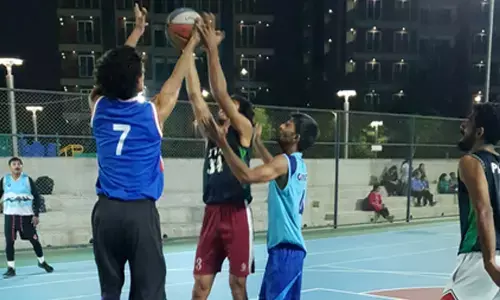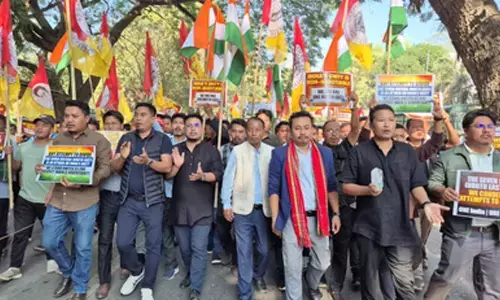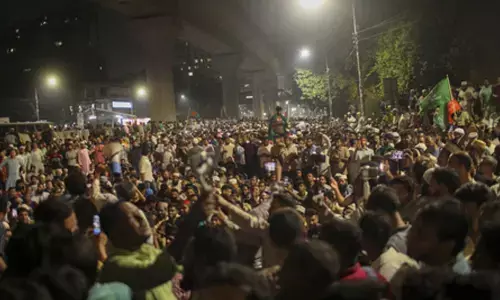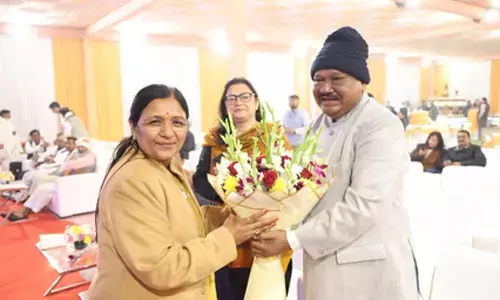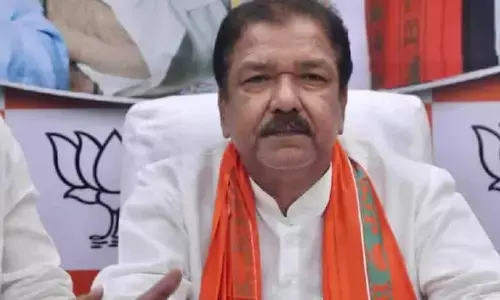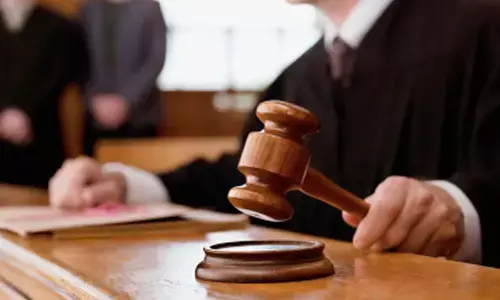What is stopping us from addressing the Immediate Needs of the Titli Hit Regions of the Srikakulam?
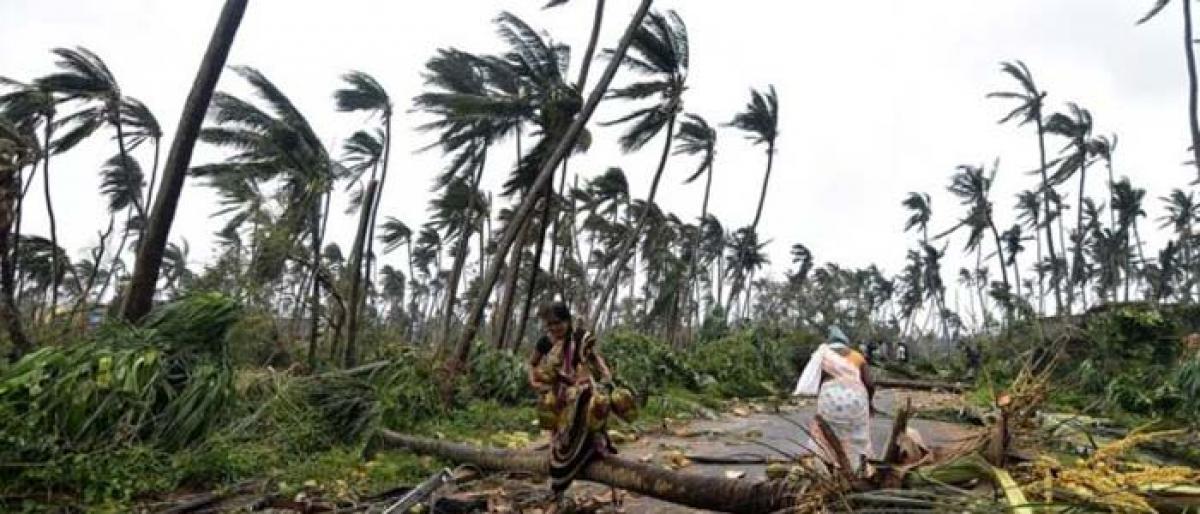
Anybody that had any remote idea or experience on how the Uddanam or any other village that draped the Northern coastal Andhra Pradesh prior to the recent Titli cyclone, for sure would turn nostalgic by recollecting the serenity and the lush green canopy of trees that dotted the sand studded lands along the sea shore
Anybody that had any remote idea or experience on how the Uddanam or any other village that draped the Northern coastal Andhra Pradesh prior to the recent Titli cyclone, for sure would turn nostalgic by recollecting the serenity and the lush green canopy of trees that dotted the sand studded lands along the sea shore. It would be shocking to watch the same region today in the aftermath of the Titli devastation as the mighty coconut trees that withstood horsing winds for decades have been uprooted mercilessly so that the entire region resembles the sight of a graveyard, with crops and corpse of the animals lying motionless in haphazard manner. The cyclone killed 8 members in the district and approximately one million populations were affected;
The news on the low pressure area getting concentrated in the Bay of Bengal has reached the officials well ahead by 9th of this month and the measures started by 10th; to begin with power supply was stopped by Wednesday, the 10th of October, in 12 Mandals of the Srikakulam district, anticipating massive havoc in these regions. Officials started pouring in gradually with the district collector taking the lead. Revenue, civil supplies, electricity and the other district authority were reported in their respective divisions; yet they have confined by and large to the mandal headquarters. The Andhra Pradesh Chief Minister himself was present Srikakulam by Thursday morning to speed up the rescue and rehabilitation. All said and done, there are loopholes and lacunae on the part of the officials that have focused the issue peripherally in a haphazard manner. It is essential to identify certain minute, yet important issues that would improve the quality of the services offered to the victims during the devastation of this scale.
For the rest of the world that is watching the news through the electronic media or reading the newspaper reports the following day could not feel the pinch of the intensity as they don’t have the first hand knowledge on the trauma it may cause. Once the power supply is off, the interiors as well as the exteriors would be dark with the passage of time. The speed and the intensity with which the wind circulates at his time cause the maximum and the irrevocable damage to the men and material in the affected regions.
The people that lived in this region, including aged, infants and the disabled could not get water, milk and food for at least 24 hours. They were also unable to move to the safer regions as the rescue team could not approach them immediately. Imagine the amount of trauma the children and the infants undergo without milk and food for the entire day.
Coastal areas are predominantly inhabited by the fishing and economically backward communities that live in mud houses or houses with corrugated tin sheets. These houses could hardly withstand the cyclonic winds that pass during the peak hours. What is important during this needy hour of the day is prior information to the communities that live very close to the seashore. Although the mainstream media, including the print and the electronic had bombarded the people with the information on the cyclone, the messages could reach the entire world, but not the affected. With no access to electricity and the entire communication system got collapsed, the mediated messages couldn’t reach the affected villages. Although the newspaper reports have mentioned about spreading the massages as announcements in the villages of Gara mandal of the district, it failed to reach many smaller hamlets that dotted the coastal areas. Ham radios and the alternative channels of communication that don’t rely on electricity or the distribution channels should have been explored to give information in advance for the people to get ready for the emergency. Cyclones are not new for the people that have been living for centuries in the coastal regions. They have been habituated for the minor or major incidents that might happen as a result of variations in the atmospheric pressures. They are aware of the preventive measures to minimize the damages to the life and property in the wake of natural disasters like hurricanes or cyclone. Had it been informed in advance, they would have at least take measures like safeguarding their shelters, roof tops and the animal that are helpless during the emergencies.
Followed by the wind and the devastation, people in the affected regions had encountered floods due to the rains that lashed the affected region with similar intensity. According to the department of the meteorology, the affected region received 77 cms rain within 48 hours.
The river Vamsadhara, Mahendra Tanaya and River Bahuda have started flowing above the danger mark due to cyclone Titli, as heavy rains lashed the upper catchment areas of Vamsadhara, Mahendra Tanaya and Bahuda in Odisha. With the flood waters being released from the Gotta Barrage on Vamsadhara, released at the discharge rate of 1.67 lakh cusecs, the houses were water marooned. Heavy inflows into the Bahuda River have submerged several areas of Ichapuram Municipality and its surrounding villages, damaging the road connecting Srikakulam and Odissa.
Once the flood water enters and recedes, the houses and the communities were filled with the mud, poisonous creatures and corpse, followed by the mosquitoes. It would be impossible and intolerable for the people to withstand and continue there for at least few hours. Unable to get out of the mess immediately, children and the infants would be worst affected due to the contagious and infectious diseases. With no drinking water, milk and the food in the vicinity, with the muddy rain water entering the houses, the very thought would be dreadful on how the affected fishermen community would have spent for the next seven days following the cyclone and floods in places like Jaganathapuram, in Ganguvarisigadam mandal that is located close to the sea shore.
Despite the close supervision of various ministers, civil sevens and officials, the aid and relief could not reach the interior villages for obvious reasons; unlike Hudhud cyclone that hit the Northern Coastal Andhra Pradesh from 8th-14th October in 2014, which was confined to the urban Vishakhapatnam, the Titli is spread across 18 mandals of the Srikakulam and Vijayanagaram that are remote, and rural with poor road and the other infrastructure facilities to reach them immediately. Again, for the urban areas the damage was confined to the basic infrastructure like roads, electric poles and the greenery so that the urbanites could resume life within couple of weeks thanks to the efforts rendered by our honorable chief Minister and the other district officials.
The same could not repeated here with Titli as the devastation is far and wide; the immediate loss apart from animals, crops and belongings was the severe loss to the livelihood due to massive damage incurred to the cashew, coconut, jack fruit, mango and banana that have a gestation of at least 10 years. The Titli hit victims have no hopes to resume life immediately, as it take at least 10 to 20 years to start getting the revenue from the crops planted once the mess is cleared.
In these circumstances, the affected would expect at least the local Government officials to visit them and assure them of the basic and essential ingredients like candles, matches, mosquito coils, water canes, food packets, blankets and medicine to cope with the emergency. Since the devastation is massive and the area affected is vast and huge, the state and the local governments should keep their speculations, party ideologies, and the eagerness to get immediate publicity out of the incident aside to urge for the support from the rest of the world, including the NGOs, political parties and civilians as volunteers for the distribution of the relief and aid. When the South Indian state of Kerala witnessed severe floods during August 2018, the entire world has responded because the information on the damage and the devastation could reach the people across the globe.
Short Term and Immediate measures to mitigate the pain includes;
No doubt the devastation caused by the nature is unavoidable; however, measures can be taken to provide immediate relief to the people of this region.
Immediate measures to rebuild, and repair the houses should be taken up so that the affected can be saved from the wind and the harsh weather conditions in the aftermath of the cyclone. Although the government has assured Rs. 1.5 lakh for the complete loss of the houses, the effected may need at least 3 lakh rupees each to restore their shelters. The astonishing truth came in our field visits that Rs 500 was given to feed the entire village consisting 30 families for vegetables; the affected may be helpless at present. Yet they deserve due respect and the aid should be forth coming on the humanitarian ground. The relief that is sent including 25 Kgs rice, 1 Kilo Tuwar Dhal, and potatoes are insufficient and it is of no use without the fuel to cook and serve the same. Measures should be taken up to assure gas, kerosene and fuel so that the communities can take care of the rest. The aid and the help should reach all the affected irrespective of their party affiliations. If the person that has voted the ruling party alone is supposed to get the relief, the deprived would be humiliated, leading to untoward incidents and conflicts for the essential commodities. Government should explore alternative employment opportunities in the wake of loss to livelihood. Lest, labor migration may decimate the villages and communities in the absence of income from the horticulture and plantations. Finally, the middle men are looting the people and forcing them to stay at their mercy. It is time to strengthen the local bodies and Gram Panchayats to empower the people at the grass roots so that the Janmabhiimi committees and the other unofficial bodies won’t interrupt the relief measures.
Dr Srinubabu Gedela, Dr. Srinubabu Gedela, completed Ph.D fom Andhra University and Postdoctorate from Stanford University. The research work is part of Pulsus Group CSR activity









